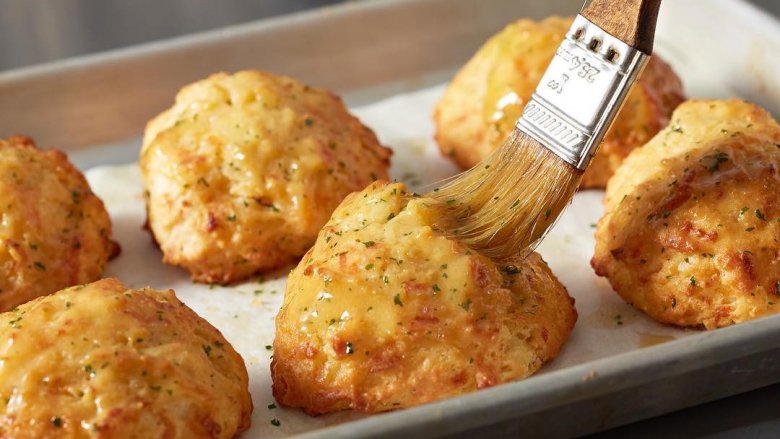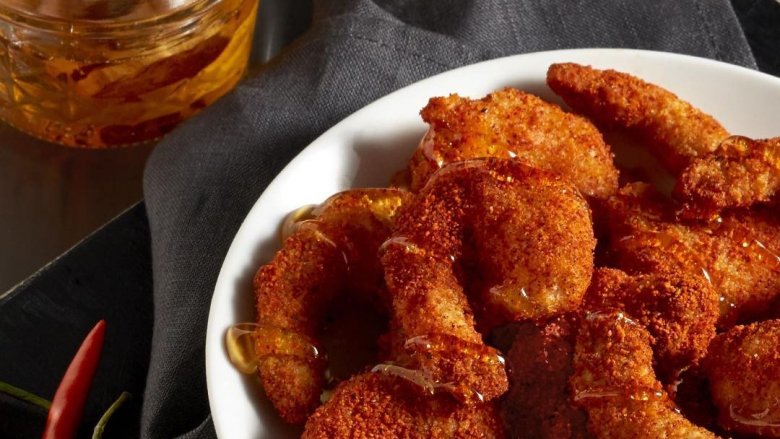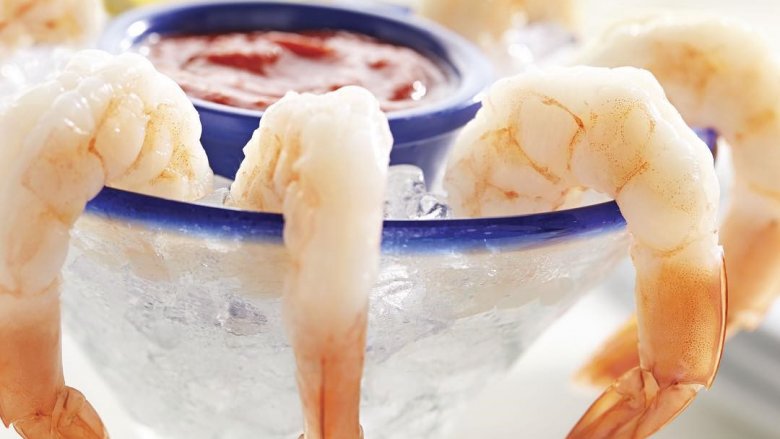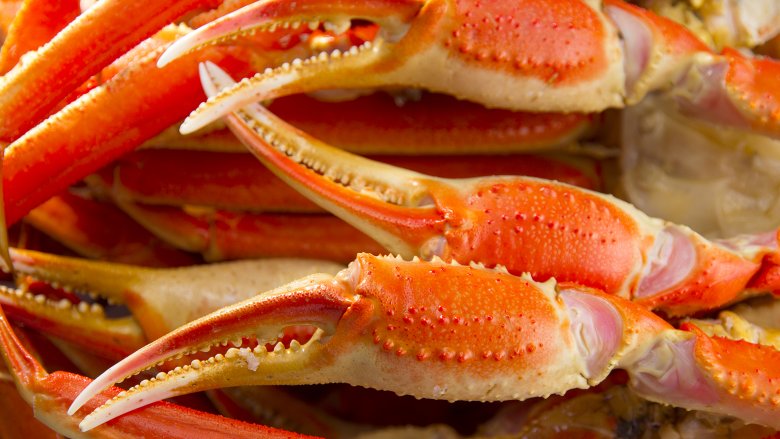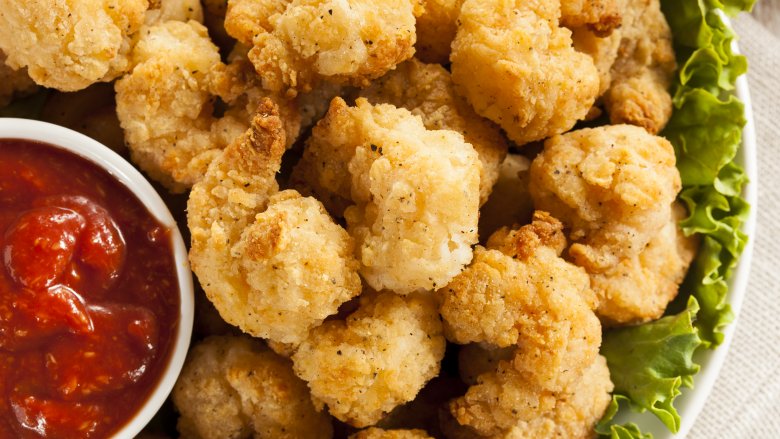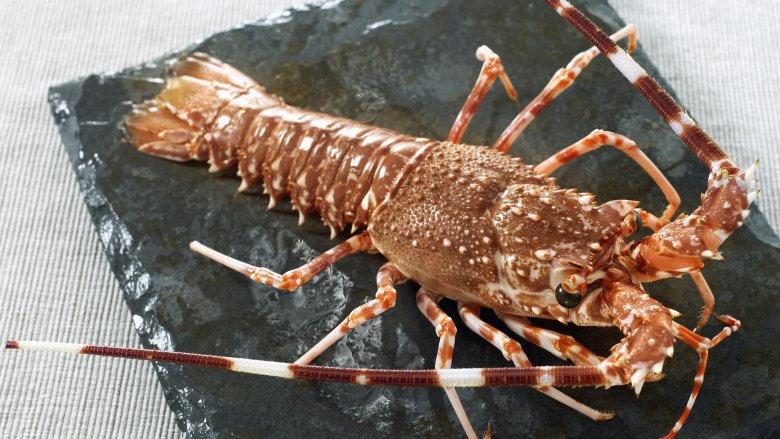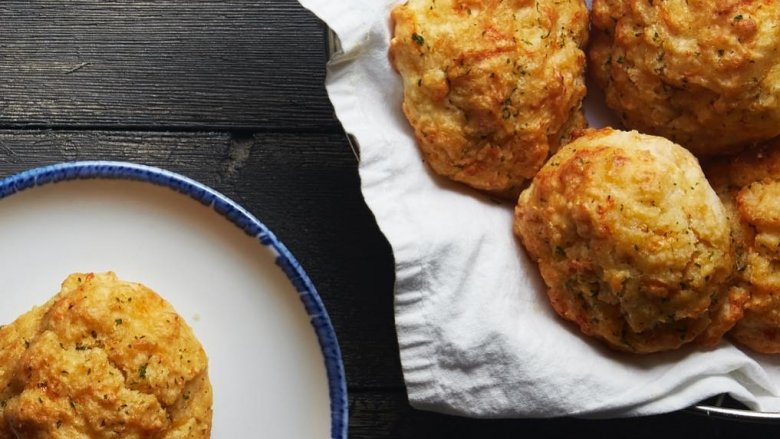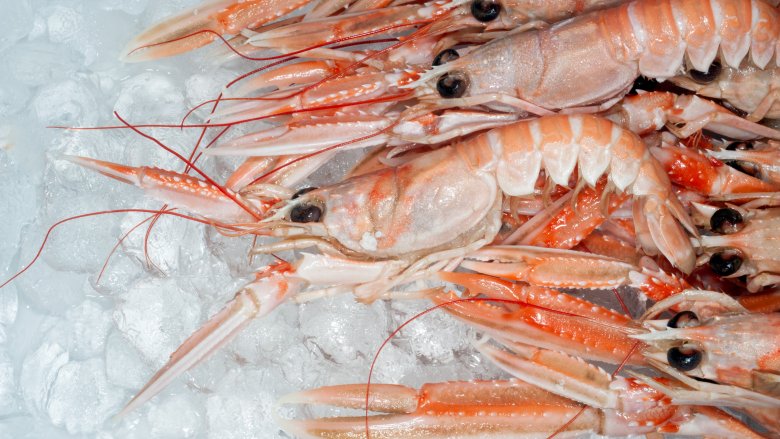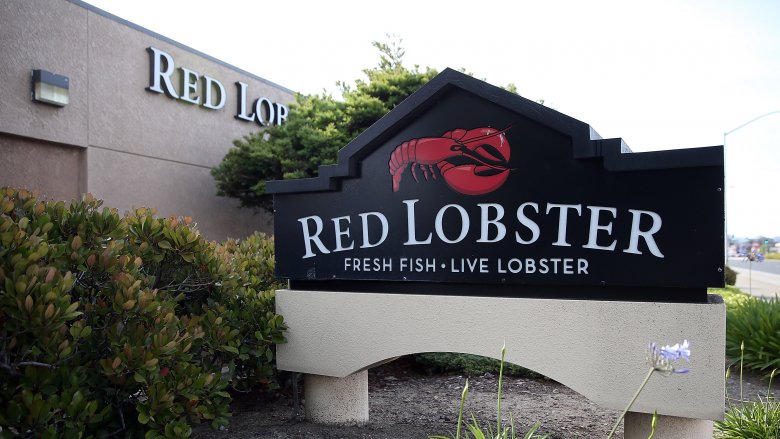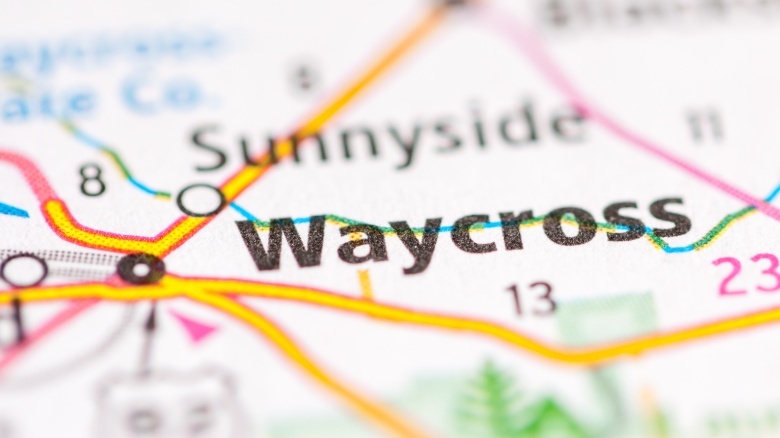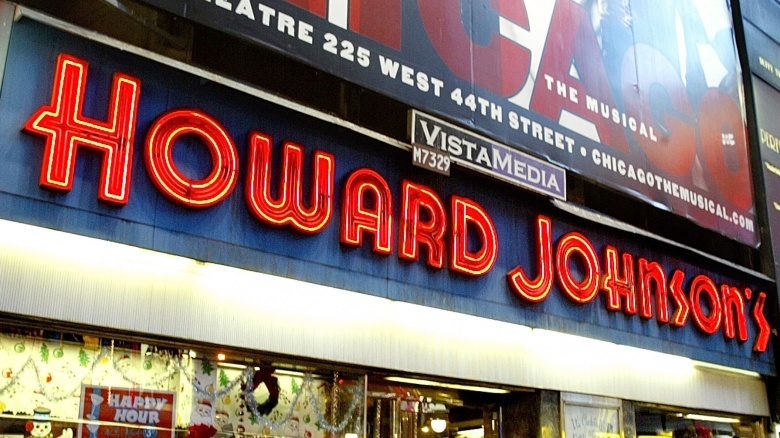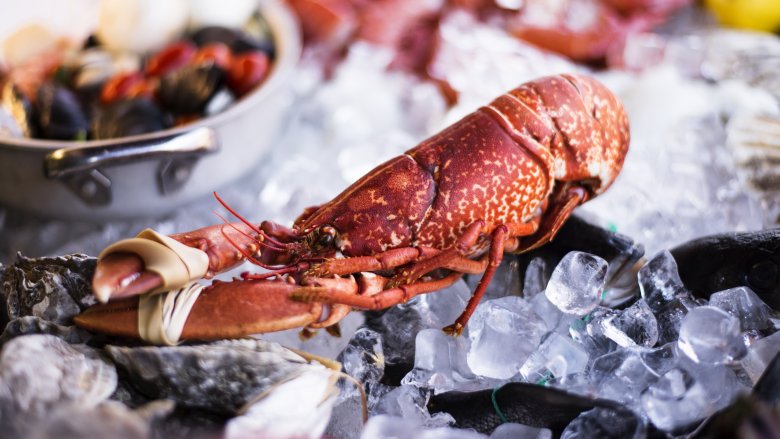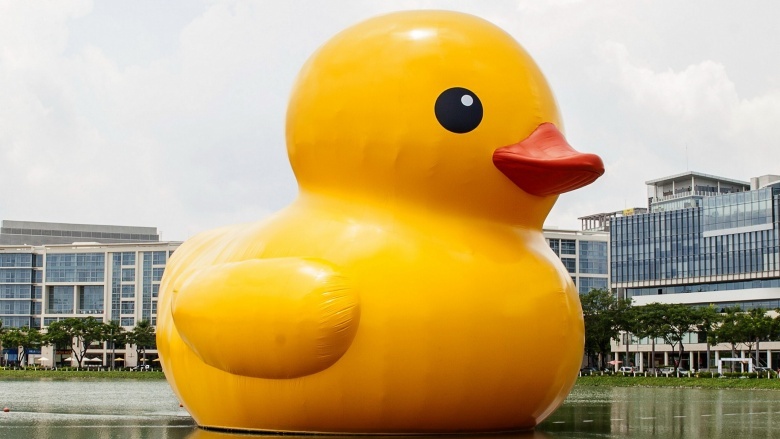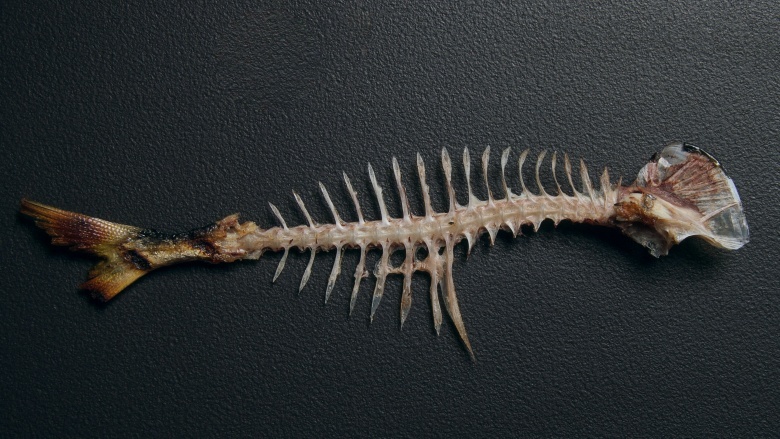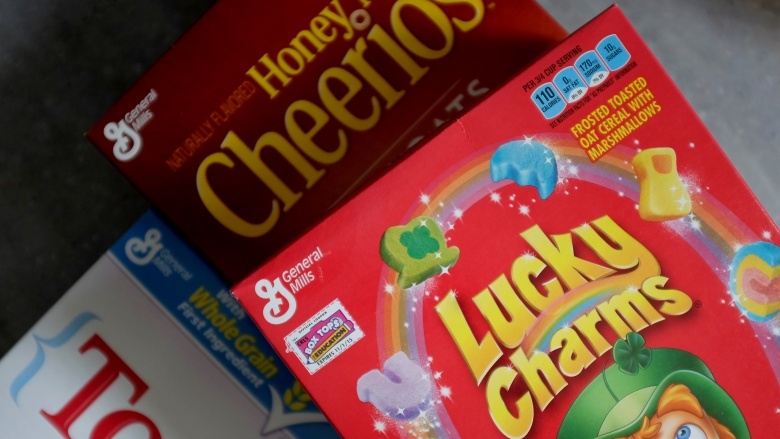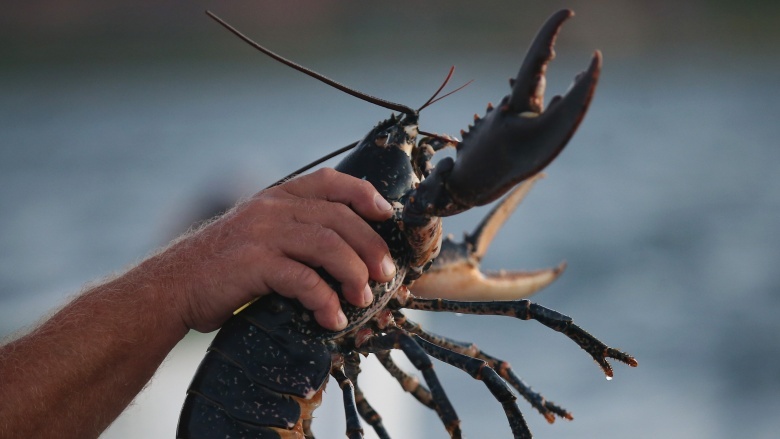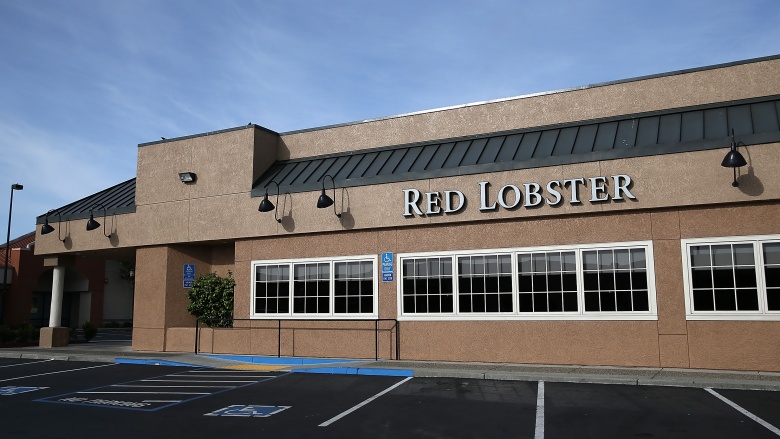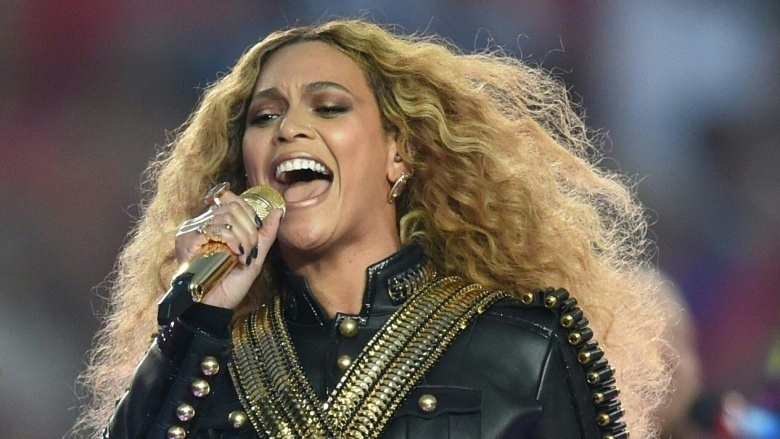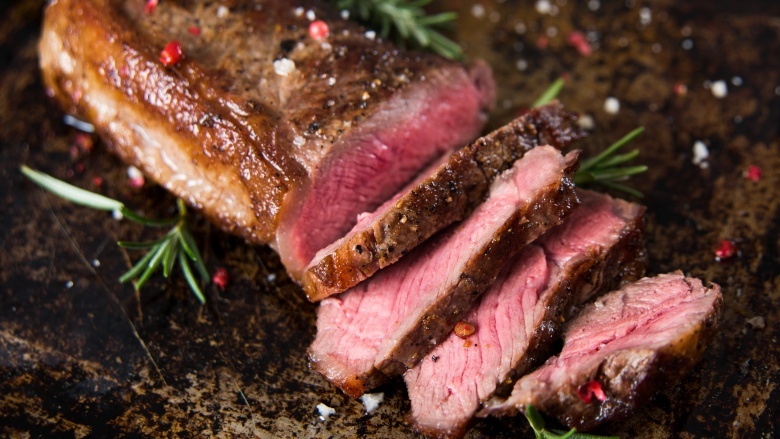The Truth About Red Lobster
Red Lobster occupies something of a strange place in the landscape of American dining, and Slate says it has something to do with their long-time link to the middle class. They captured the market when it came to normal American families looking for a good meal out that wasn't going to break the bank, but had better than Dollar Menu value. They were the flagship of casual family dining, and their heyday was in the 1990s.
That heyday has faded, and just like the landscape of the entire country has changed, so has dining. Red Lobster was suddenly looking at how they could win customers back rather than keep them, and that says a lot about not just what families are looking for in terms of 21st century dining, but about what they can afford. Casual has given way to fast-casual (restaurants like Chipotle and Five Guys), but one thing's for sure — nothing can beat those biscuits or the endless shrimp. So, let's talk about Red Lobster and what you might not know about this iconic American chain.
Those biscuits were a late addition
When Tina Fey wrote her memoir, Bossypants, she gave Red Lobster's famous cheddar biscuits a shout-out, writing, "There is no one of-woman-born who does not like Red Lobster cheddar biscuits. Anyone who claims otherwise is a liar and a Socialist."
Strong words, but when the Chicago Tribune looked into the Cult of the Cheddar Bay Biscuit, they found it's pretty much the truth. They learned that restaurants bake a fresh batch about every 15 minutes, and almost never throw any away.
The biscuits are so firmly associated with Red Lobster that it's surprising they're a fairly late addition to the menu. They only showed up in the early 1990s, and we even know who to thank for creating them: Kurt Hankins. Hankins says he was tasked with coming up with something to replace hush puppies, and he started with Texas-style toast. That turned into biscuits, partially because they went well with seafood, and partially because biscuits are the perfect comfort food. They were tested in Georgia, debuted as "freshly baked, hot cheese garlic bread," and were renamed Cheddar Bay Biscuits five years later. Were they a success? They serve around 1.1 million biscuits every day.
The Endless Shrimp is actually endless
Sure, they might say it's endless shrimp, but is it really? We know that all-you-can-eat buffets aren't above kicking out their biggest eaters, and you might think it's the same principle at work. But in 2016, Business Insider headed to Red Lobster with a plan: eat so much off the Endless Shrimp menu that they were cut off.
They weren't. The two reporters sat at Red Lobster for eight hours and by the time they finished the marathon, they'd eaten a grand total of 305 shrimp — then asked for more shrimp in a bag to go. They got that, too. Over the course of what amounts to a standard work day, they found Red Lobster was not only cheering them on, but the store's manager came over and introduced them to some shrimp-filled options not on the main menu. They even offered some hints on how to keep going, including minty mojitos and ginger ale for digestion.
Just a fluke? A group from The Huffington Post tried it in 2013, and one person alone downed a staggering 101 shrimp. Endless, indeed!
The shrimp almost broke them
With Endless Shrimp being most definitely endless, you'd think that was the flaw in their business plan. It wasn't, and when Red Lobster flailed in 2014, it wasn't because of the quantity of shrimp they went though, it was because of their costs.
According to Quartz, a massive blight and bacterial disease swept through the world's largest shrimp-producing countries (China, Vietnam, and Thailand) and drove prices through the roof. Between 2009 and 2013, the price Red Lobster was paying for their shrimp tripled, and that's enough to break any business — especially one reliant on the product in question as a main staple.
That brought up another question that Business Insider helpfully answered: just how much shrimp would a person have to eat before Red Lobster starts losing money? At the time — 2012 — the Endless Shrimp deal was an average of $15.99. Based on some inside information, they were paying around $5 a pound (for only ingredients, not overhead), and that means a customer would have to eat about 3 pounds of shrimp to really get their money's worth. That's around 100 shrimp, and that's an insane amount. Still, the increase in cost hit the seafood where it hurts.
Endless snow crab was a terrible idea
While Endless Shrimp is a serious money-maker for them, Endless Snow Crab was a devastating mistake.
According to Anchor of Gold, Red Lobster introduced their Endless Snow Crab in 2003, when the price of crab was around $5 a pound. They were charging $20 per customer, and you can probably see where the math isn't going to quite work out. Only three plates into the deal and they were no longer making a profit, and ultimately, the promotion meant they were losing about $1.1 million a month while it was running.
The difference is that snow crab is highly regulated, and just how much is going to hit the market depends on what's approved by the US government. In 2002, they only allowed 172 million pounds of snow crab to be caught. That sounds like a lot, but consider this: in the late 90s, that was up to around 250 million pounds. Less crab meant higher prices, but appetites of customers always stayed the same.
They invented popcorn shrimp and the POS
What would the world be without popcorn shrimp? A much sadder place, that's for sure, and according to the Orlando Business Journal's interview with Joe Lee and Charles Woodsby, you can thank Red Lobster for inventing it.
Lee said popcorn shrimp was just one of the things they invented to revolutionize the restaurant industry, and also said they pioneered the very first point-of-sale system at a time when computer technology was finally catching up to what the world wanted it for. They wanted to be able to keep track of sales, and kick-started a system that's in pretty much every sizeable restaurant today.
They also took credit for introducing a good part of America to calamari and snow crab, but there is some debate over the popcorn shrimp claims. While Red Lobster says they hit on the idea in 1974, Filter Corp says the idea actually came from a Creole and Cajun chef named Paul Prudhomme. So... who's telling the truth?
They have dreams of farm life
Red Lobster isn't just selling lobster, they're trying to find a way to make the industry completely self-sustainable. According to ABC News, Darden Group started funding the Australian Research Council's work in developing lobster farming programs way back in 1998, and it took a pretty shocking 16 years before researchers were able to raise lobsters in captivity.
The timing is good, too, as researchers say wild lobster populations are threatened in many parts of the world, and Darden, Red Lobster's former parent company, added (via Darden Digest) that they were fully investing in protecting the lobster. In addition to helping with the launch of the Atlantic Lobster Sustainability Foundation and participating in the Global FISH Alliance, they also funded the Darden Aquafarm, where they hoped to be producing around 40 million pounds of lobster every year by 2029.
It was a huge venture, and it would be the first commercial lobster farm in the world. The Orlando Sentinel said the 23,000-acre farm would employ 12,000 people and cost $650 million — $300 million of which would come from Darden. The ultimate goal? Supply Red Lobster with sustainably raised spiny lobsters, like the one pictured. Unfortunately, Darden and Red Lobster have since parted ways, and the project appears to be at a stand-still.
Food coma claims
In 2013, the satirical news site The Rock City Times ran a story about one of their food writers, Kevin Shalin. According to them, he had slipped into a coma after eating 413 biscuits — which doctors said contained 51.5 sticks of butter. Friends warned him to stop on number 412, but it was 413 that dropped him to the floor. The story added this from another local food writer: "He had no clue what to expect. ... he decided to try one of the biscuits. He thought they were the most wonderful things he ever placed in his mouth." Then... he was off.
Also of note is the fact the outlet bills itself as "Arkansas' 2nd more unreliable news source," which should have been a clue. It wasn't, and the story ran in tabloid-esque papers across Canada and Britain. Once they realized it was a hoax, most took the story down, but The Huffington Post says they mostly neglected to tell their readers it was fake. It spread so far and wide that Shalin had to take to Twitter to confirm, "It is fake. I am fine. I did not eat 400+ biscuits."
Lobster lookalikes
In 2016, it was Red Lobster who was in the hot water after Inside Edition did some serious DNA testing. When they took samples of the meat from the chain's lobster bisque, they found not all of it was the sort of lobster customers tended to expect: part was langostino (pictured).
That's the stuff of scandal, and Red Lobster scrambled to explain the bisque was prepared with a variety of lobster, including Maine and Langostino. The fact the tests seemed to show only this less-popular, less-expensive type of lobster (one closely related to a hermit crab) was what they questioned, and when Inside Edition wanted to know what was going on, Red Lobster called it the "luck of the ladle".
Sounds odd? They made it clear to The Oregonian they were changing the menu anyway, to more completely and accurately reflect all the ingredients. To be fair, Red Lobster wasn't the only one to be caught up in the scandal, and even Nathan's and Soupman were caught red-handed.
Over-serving alcohol lawsuit
Any restaurant serving alcohol has a responsibility to their customers, and in 2017, one Red Lobster customer sued after she walked out with a blood-alcohol level of .31, more than three times the legal limit. She didn't get far — 82-year-old Marlene Spencer fell in the parking lot, hitting her head and breaking both her hip and her right arm.
According to the Houston Chronicle, the suit charged that it wasn't the first time that particular Red Lobster location had over-served Spencer and some of the other residents of her senior living center.
Spencer's daughter claimed she'd spoken to staff and management more than once about their alcohol policies, and when Eater reached out to try to get more information, Red Lobster responded with a statement simply clarifying they had strict guidelines in place for serving alcohol... but wouldn't comment beyond that, as it was an ongoing legal matter.
The Green Frog launched two ships
Now that you're full of fun Red Lobster trivia facts, let's talk about the strange history of the chain. Bill Darden had aspirations early on of being a restaurateur. At the tender age of 19, he opened the Green Frog in Waycross, Georgia in the 1930s. The 25-seat diner and drive-up service proved a hit with locals, serving up the standard diner fare of chicken, steak, and all your southern staples, providing "service with a hop." To say that Darden was ahead of the curve is an understatement. Despite being in the Deep South, the Green Frog did not segregate customers based on race.
The original Green Frog closed in Waycross in 1981. The original building remains, and the legacy of Green Frog is still known to locals today. If you drive on Interstate 75 through Georgia, between Valdosta and Tifton, a plethora of billboards direct you to King Frog, a well-known clothing boutique. It might be hard to imagine, but that boutique has nearly ancient ties to Red Lobster.
In 1973, entrepreneur John L. Williams purchased a Quality Inn in Adel, Georgia, which also made him the landlord of the attached (and successful) Green Frog restaurant. He kept the frog and made him royalty, and plastered King Frog on billboards for miles to direct the weary and mildly curious driver to Adel. So, the Green Frog led to not one, but two well-known brands.
It owes a lot to Howard Johnson
With the success of the Green Frog, Bill Darden had some extra cash laying around, so he bought into the Howard Johnson franchise. If everything you know about HoJo is from Mad Men, you might be surprised to know that not only was it the first national, full-service restaurant chain, it was the second most popular chain in the 1960s and 70s. Darden owned all or part of 20 Howard Johnson hotels or restaurants.
In a twist of luck, Darden's impeccable timing led to him owning all those Howard Johnson's in Florida during a land boom. Once again, with a little scratch in his pocket, he began the search for another restaurant — this one in Florida — to take things in a different direction.
They sold the chain out very early
Darden realized seafood sold very well at his restaurants, so continuing with a seafood theme seemed safe. With Gary's Duck Inn holding down Orlando, the group looked elsewhere in the Sunshine State. Lakeland, Florida, almost half-way between Orlando and Tampa, and 40 miles from the ocean, became the home of the Red Lobster Inn (the original name) in 1968. Darden and his partner Charley Woodsby had an instant hit in their "harbor for seafood lovers" — that was the original catchy slogan.
Red Lobster expanded quickly, growing to five locations, as far away as South Carolina. It soon caught the eye of General Mills. Despite only existing for two years, the partners sold Red Lobster — the entire chain — in 1970. Darden and Woodsby both remained on board, taking positions with General Mills. Charley's son, Ron Woodsby once told me that at the time, his father was thrilled to sell Red Lobster. Given the cost of lobster, it was getting expensive to obtain the product.
What the duck?
You probably know the name Darden. Woodsby, however, you might not have heard of. Bill Darden met up with fellow Georgia native Charley Woodsby. They had their eye on another restaurant — this time, seafood.
Gary Starling opened Gary's Duck Inn in Orlando in 1945. The restaurant was extremely popular and a must-stop for everyone who rolled into Orlando in the pre-Disney days — when it was basically a nothing town. Eighteen years later, in 1963, Darden, Woodsby, and their other investors bought out Gary. Known for great shrimp and lobster, the new owners were excited to try out this new cuisine. Gary's Duck Inn closed in 1994. There's now a 7-11 and a Dollar General on its former piece of land on Orange Blossom Trail.
Other founder's son in the restaurant biz
Woodsby is no small potatoes in the restaurant world. After selling to General Mills, Charley stuck around for a few years before taking an early retirement at the tender age of 42 — and that retirement lasted exactly one year. The restaurant bug bit again and along with son Ron, he opened Talk of the Town in Lakeland. They liked the name so much, they used it for their new restaurant conglomerate. They continued to open restaurants around the greater Central Florida area and still do today.
One of their restaurants is FishBones. If you're thinking that must be the same as the popular chain, Bonefish Grill, it's not. Ron Woodsby thought it sounded similar, too. In 2002, he sued parent company Outback Steakhouse for creeping on his name and likeness (both use fish and bones, ironically enough). You think you're confused? An employee at an Outback-owned property once "became angry" when she didn't get an employee discount at Fishbones! In case you were wondering, Bonefish Grill first opened in 2000, and Fishbones beat them by five years. And neither of them are associated with Fishbone, who started in 1979. It's a lot to take in, I know.
Darden Spun out of General Mills
Bill Darden stayed on with General Mills until 1983. In his retirement, he still consulted for them and kept an eye on Red Lobster and their other family of restaurants. After his death in 1994, General Mills hatched a plan to create a new company for their restaurant arm. In the ultimate honor to one of the men who started it all, in 1995 they spun off the restaurant side of the business and named it Darden Restaurants, Inc.
Mostly likely, you've eaten at a Darden restaurant. Who hasn't eaten at an Olive Garden, right? Or Longhorn Steakhouse? Darden owns seven chains that produce over $6.8 billion across 1,500 stores. They remain the number one casual-dining operator in the US and Canada, even though they're not as big as they once were.
Red Lobster is released
You'd think given the fact that without Red Lobster, there would be no Darden, they'd be a bit protective of the brand. Not when there's a profit to be made. In 2012, Red Lobster was... wait, I got this... floundering. After an up and down decade, the second quarter of 2012 saw Red Lobster sales dip 2.7 percent, and the rest of Darden's brands weren't doing well, either.
Despite being the founding chain, Darden sold Red Lobster to Golden Gate Capital for $2.1 billion in 2014. When you think about it, the same problems Woodsby saw in the late 1960s still exist today — fish is still expensive to stock.
It's still a fluid business
Golden Gate saw potential in the more than 40-year-old company, obviously. But at the same time, the name of the game is turning a profit, and if you're not cutting it you need some help.
In 2016, Golden Gate Capital accepted minority ownership from Thai Union Group PCL to the tune of $575 million. The Asian company is a seafood distributor, which will cut some cost by providing product. You've probably had Thai Union Group product before — they own Chicken of the Sea. You know what that means? Jessica Simpson must love Red Lobster now.
What's old is new again
Golden Gate and Thai had a vision; they wanted to keep the brand, but at the same time update the menu to make it fresh and in-line with today's tastes. And guess what? It worked. Red Lobster is a hit with millennials. Turns out, people between the ages of 18-24 called it their number one casual dining restaurant in a recent survey.
You know what really helped Red Lobster? Beyoncé. The Super Bowl 50 performance of "Formation" features Mrs. Carter singing about Red Lobster. Who knew the Bey-Hive could handle water? Sales rose 33 percent immediately after Red Lobster got the free advertising during the most-watched TV event of the year. Just what they needed.
Charley's name is still out there
So Red Lobster is still afloat, Bill Darden's legacy lives on in Olive Garden and the rest of the family of restaurants, but what about Charley? Turns out Mr. Woodsby did OK for himself.
As we mentioned, Charley and son Ron founded Talk of the Town. They own a chain of restaurants around central Florida in the higher end of sit down joints. He's semi-retired, but Charley Woodsby is still out and about, and there is an eponymous restaurant in Orlando that serves some mighty fine cuisine. He is the Charley of Charley's Steakhouse, a very well-known restaurant in Orlando. So, 50 years ago, when two Georgia guys got together in Florida to buy a Duck, and then start a Lobster, who knew their names would carry on in the restaurant world still today?
